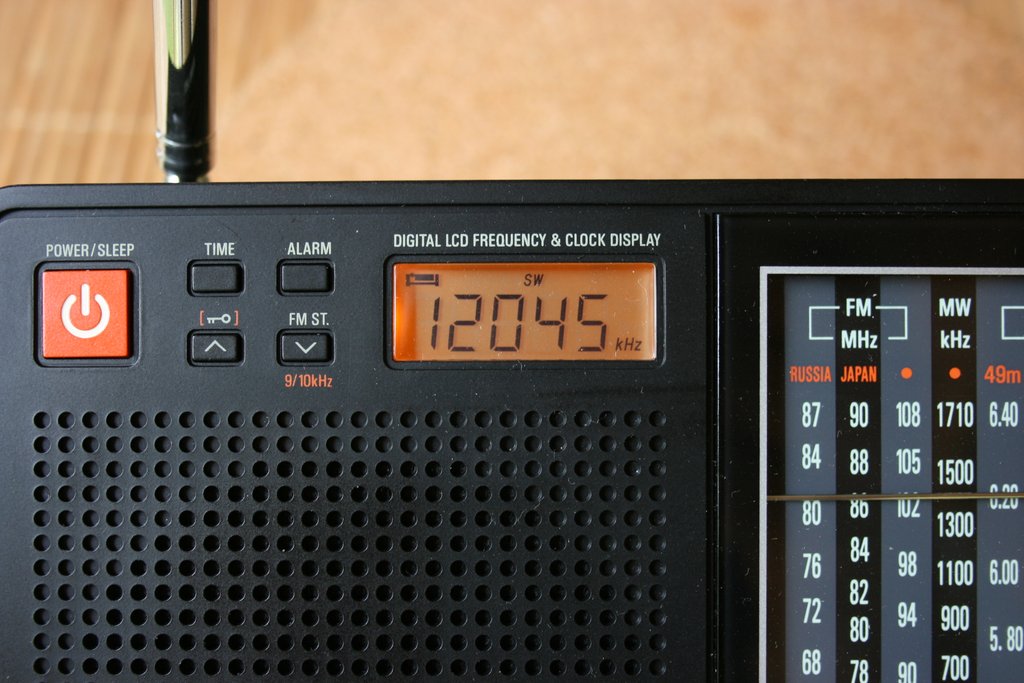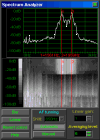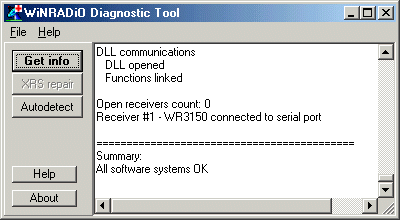
| WiNRADiO 1000-3000 Series Software Developer's Information |
- Download Winradio Drivers
- Download Winradio Drivers
Software Developer's Kit The SDK document outlines the API specification for the 1000/1500 and 3000 series of WiNRADiO receivers. The API is implemented in both 16 and 32 bit drivers: WRAPI.DLL for 16 bit applications (Windows 3.1x and 95) and WRAPI32.DLL for 32 bit applications (Windows 95, 98, NT 3.5 & 4, 2000 and XP). |
| Each function shows its declaration in C and Delphi and can be used in both 16 and 32 bit environments. The actual DLLs are available as standard part of the WiNRADiO applications which are supplied with the receivers. The applications can be also downloaded from here. |
|
| Controlling WiNRADiO using DDE Under Windows, WiNRADiO can be controlled from another program using WiNRADiO's DDE (Dynamic Data Exchange) interface. A DDE implementation example is provided to demonstrate how to control WiNRADiO using Word for Windows macro language. Using DDE, you can also write WiNRADiO control programs in high-level languages for Windows such as C, C++, Delphi, Visual Basic. A small Delphi program that controls WiNRADiO through DDE is provided in this document. |
| | Controlling WiNRADiO in DOS WiNRADiO for DOS (or rather DOSRADiO) is a command- line program which can be used to control a WiNRADiO receiver without Windows. This can be convenient for some special applications. The executable file can be used either directly, or incorporated in batch files or other programs. Other examples of interfacing DOSRADiO and a complete command summary are provided in a separate DOS related document. DOWNLOAD DOSRADiO
DOWNLOAD DOSRADiO Source Code |
|
Winrad is a free amateur radio program conceived by Jeffrey Pawlan, WA6KBL, that implements many Software Defined Radio (SDR) functions which are needed for weaksignal reception including EME, troposcatter, cloudscatter, and very long distance microwave terrestrial contacts. Download LinRadio Tools/Applications/Drivers for free. Support for WiNRADiO radio receivers on Linux and other Unices. Unlike with many radio equipment manufacturers who rely on third parties to provide software support, WiNRADiO develops its own software. Our software development departments. Employ scientists and engineers with decades of experience in digital signal processing, user interface development, and embedded control systems. It's very good for real-time measurement, the use of this software is very professional.
| WiNRADiO API Application Examples In the following, WiNRADiO API application examples for Delphi, Visual Basic and C/ C++ are provided. Each application is a fully operational WiNRADiO controller and makes use of the WRAPI Dynamic Link Library. All examples come with full source code, demonstrating how the WiNRADiO API is accessed under each development environment. Develop your own applications easily by modifying the provided source code! |
| | For Delphi programmers, a Delphi VCL component is also provided, together with an example application of a fully operational WiNRADiO controller. Using this component you don't need to worry about the API at all - this component does it all for you and you will be able to successfuly implement WiNRADiO control in a few minutes. All demonstration applications attempt to present the same user interface where possible, using only standard visual components that are part of the development environment. |
|
| WiNRADiO in Visual Basic This Visual Basic example of a simple PC controlled receiver panel was developed under Visual Basic version 6. Please note that the program needs to be compiled in P code. DOWNLOAD Source Code |
|
| WiNRADiO in Delphi This example was developed using Delphi version 3 and runs under a 32-Bit (Windows '95, Windows NT) environment. The signal level is displayed using the Gauge component in Delphi. The source code for this example is contained in a ZIP archive containing a README file which explains what the files in the archive are, and how to use them to compile and run the example application. |
|
| WiNRADiO in C/C++ This example will compile with most versions of C compilers and runs under a 32-Bit (Windows '95, Windows NT) environment. The source code for this example is contained in a ZIP archive contains a README file which explains what the files in the archive are, and how to use them to compile and run the example application. There are two versions, the first is utilises static linking with .LIB files (for both Microsoft and Borland compilers), the second utilises run-time linking with source (WRAPI.C). DOWNLOAD .LIB Source Code
DOWNLOAD .C Source Code |
|

| WiNRADiO VCL Component for Delphi and C++ Builder The above example programs demonstrate how to use the WiNRADiO API functions to create applications that control WiNRADiO in several development environments. You can, however, avoid the details of the API functions if you are using Delphi or C++ Builder to develop WiNRADiO control applications. The WiNRADiO VCL component can be used very quickly to create an application that controls WiNRADiO. Being a VCL component, you can place it on your component palette in the IDE. To create an application that controls WiNRADiO, simply drop this component onto a form and set its properties at either design or run time. This component looks after the API calls for you, so you don't have to concern yourself with any of the details of the WiNRADiO API. |
| The source for this VCL component is contained in a ZIP archive containing a README file which explains what the files in the archive are, and how to use them to compile and install the package. You must install this component into the IDE before you load the VCL component example application. Instructions for this are provided in the README file. |
|
| Memory, Spectrum Scope and Signal Strength File Formats The WiNRADiO 1000/1500/3000 series of PC-based receivers all use the same memory file and spectrum scope file formats. The 3000 series also uses a special format for the Signal Strength Recorder. All three file formats are provided here for the benefit of our users and third-party developers. DOWNLOAD Memory File Format
DOWNLOAD Spectrum Scope File Format
DOWNLOAD Signal Strength Log File Format |
| | Please note that non-adherence to the specified formats may yield unexpected results when attempting to load memory, spectrum scope, or signal strength files created by non-complying third party software. However, this can't damage the receiver. Please also note that import/export facilities for memory files, the WiNRADiO Memory Manager and the Advanced Memory, are available for a free download from the XRS Web site. |
|
| Notes on DSP Development The WiNRADiO 3000i-DSP series of internal receivers are equipped with a DSP which can be accessed by third-party programmers. Audio samples can be retrieved from the DSP in real time, as well as sent to the DSP for playback. For this purpose, the SDK document includes DSP-specific functions. Example source code is also available, which contains a simple implementation of an audio recorder, whose control panel is shown on the right. |
|
WiNRADiO for Labview
Radio Basic Programming Language (www.rbasic.com)
Extensible Radio Specification (XRS) (xrs.winradio.com)
WiNRADiO for Linux (www.linradio.com) |
|
Licensing Terms
There are two licensing options available for TightVNC software:

- GNU General Public License version 2 (often abbreviated as GNU GPL). This is the default licensing option. It's completely free but it does not allow integration with closed-source products. Read the complete text of the license here (opens in a new window).
- Commercial source code license. Unlike GPL, it allows integrating the software into proprietary products, although it's not free. Read more about commercial licensing.
Download TightVNC for Windows (Version 2.8.59)
TightVNC 2.8.59 runs basically on any version of Windows (see more details here).
Download Winradio Drivers
- Installer for Windows (64-bit) (2,486,272 bytes)
- Installer for Windows (32-bit) (2,068,480 bytes)
You can also download TightVNC source code (or purchase a commercial license):
- TightVNC C++ source code for Windows, ZIP archive (2,733,268 bytes)
See also:

Download TightVNC Java Viewer (Version 2.8.3)
TightVNC Java Viewer works on any system where Java is supported. It requires Java SE version 1.6 or later.
- TightVNC Java Viewer JAR in a ZIP archive (890,473 bytes)
You can also download TightVNC Java Viewer source code (or purchase a commercial license):
- Java Viewer source code, zipped archive (560,872 bytes)

Download DFMirage Driver
Download Winradio Drivers
It's a recommended add-on if you use TightVNC with Windows 7 or earlier version. It's not needed with Windows 8 and above.
DFMirage mirror display driver allows TightVNC to gain the best performance under old versions of Windows. With DFMirage, TightVNC Server can detect screen updates and grab pixel data in a very efficient way. If you use TightVNC as free software, DFMirage is FREE for you as well.
Older Versions
If you need a version working in Windows 95/98/ME, Windows NT 4.0, or in Unix-like systems (including Linux), download TightVNC 1.3.10.
Verify the Files
All executable files and packages (.EXE files) are digitally signed by GlavSoft LLC. Make sure to check the digital signatures.





